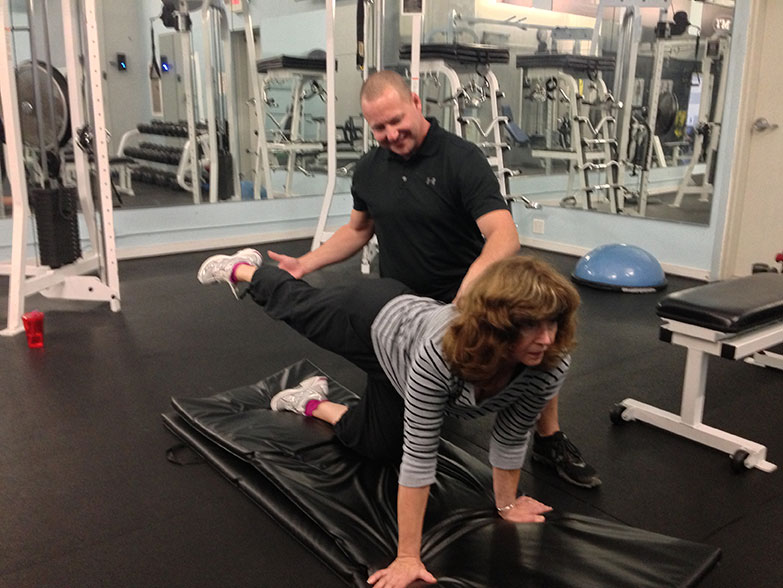
Making Strides With Gait Dysfunction
Client: Carol Ann
Personal Trainer: Eric Taylor, owner, Taylor Made Training
Location: St. Simons Island, Georgia
Origin. At age 67, Carol Ann knew she needed help. She longed to improve her health and fitness, but a dysfunction in her gait produced a significant roadblock. She’d made little progress with physical therapists and doctors, so she decided to try a new approach: personal training.
“I met with Carol Ann about 6 months ago,” explains Eric Taylor, owner of Taylor Made Training. “She was very nervous and apprehensive for two reasons: One, she had been to physical therapists and doctors and had not had much success; two, she had never had a trainer before.”
Throughout the initial meeting, Taylor took notes as Carol Ann explained her fitness goals. She also provided a thorough synopsis of her gait issues and walking patterns. Taylor was hesitant at first—his expertise is in fat loss and body transformation. “I did have some reservations about working with Carol Ann because sometimes we as trainers try to be an expert in every area,” he says. “When she shared her story with me, I told her that I would do my best as a trainer—not as a therapist— to help her get stronger and accomplish her goals.
Foundation. Prior to program development, Taylor facilitated several assessments to determine first steps. “My initial assessments were simple,” Taylor says. “Carol Ann walked on the treadmill at a very slow pace while I made a video from a posterior view. She also calling all trainers performed basic movements, like box squats, and unilateral movements like standing leg curls and knee raises.” From these assessments, Taylor noted significant weakness in Carol Ann’s lower body and observed that her right heel “turned in” when she walked.
Taylor felt he’d learned enough to develop a solid foundation for his program design, which included three components:
- Warm-up. Carol Ann walked at a slow pace with emphasis on a heel-to-toe stride while keeping her toes pointed forward.
- Strength. “Whether for fitness or therapy, getting stronger is always at the forefront of my programming for clients,” says Taylor. “We began with several basic movements like high bench squats, low step-ups, hip bridges and knee raises.”
- Function. Carol Ann likes to travel and be active, so Taylor implemented everyday activities into her sessions. For example: She walked 30 feet, picked up a small medicine ball, walked 30 more feet, and put the ball down. Then she stepped up onto and off a 4-inch mat and walked another 10–15 feet.
Progression. The training process wasn’t always easy, Taylor concedes. Carol Ann was a novice exerciser, requiring significant coaching on optimal form for basic movement patterns.
“We both struggled at times, but she was determined and I was steadfast and very patient with her,” he says.
Although Taylor is still uncertain about the cause of Carol Ann’s gait dysfunction, he has seen his client make remarkable progress. “She can now step up onto a 12-inch box unassisted. She is able to use her own body weight to perform unilateral TRX® squats and lunges. She performs unilateral hip bridges and leg curls and—most important—she walks better. Her walking is still not perfect, but she is making tremendous improvements.”
Transformation. Taylor has found working with Carol Ann a great learning experience, and he encourages other personal trainers to step outside their comfort zone from time to time.
“There are so many people out there who have given up simply because no one will take the time to care,” he says. “Know your limits, but dig deep within yourself. Further your education and continue to learn so that you can make a difference in the life of an individual who really needs you. Don’t be afraid to ask for help from other professionals; get local doctors, therapists and even other trainers involved. Enjoy the process of this thing we call health and wellness.”